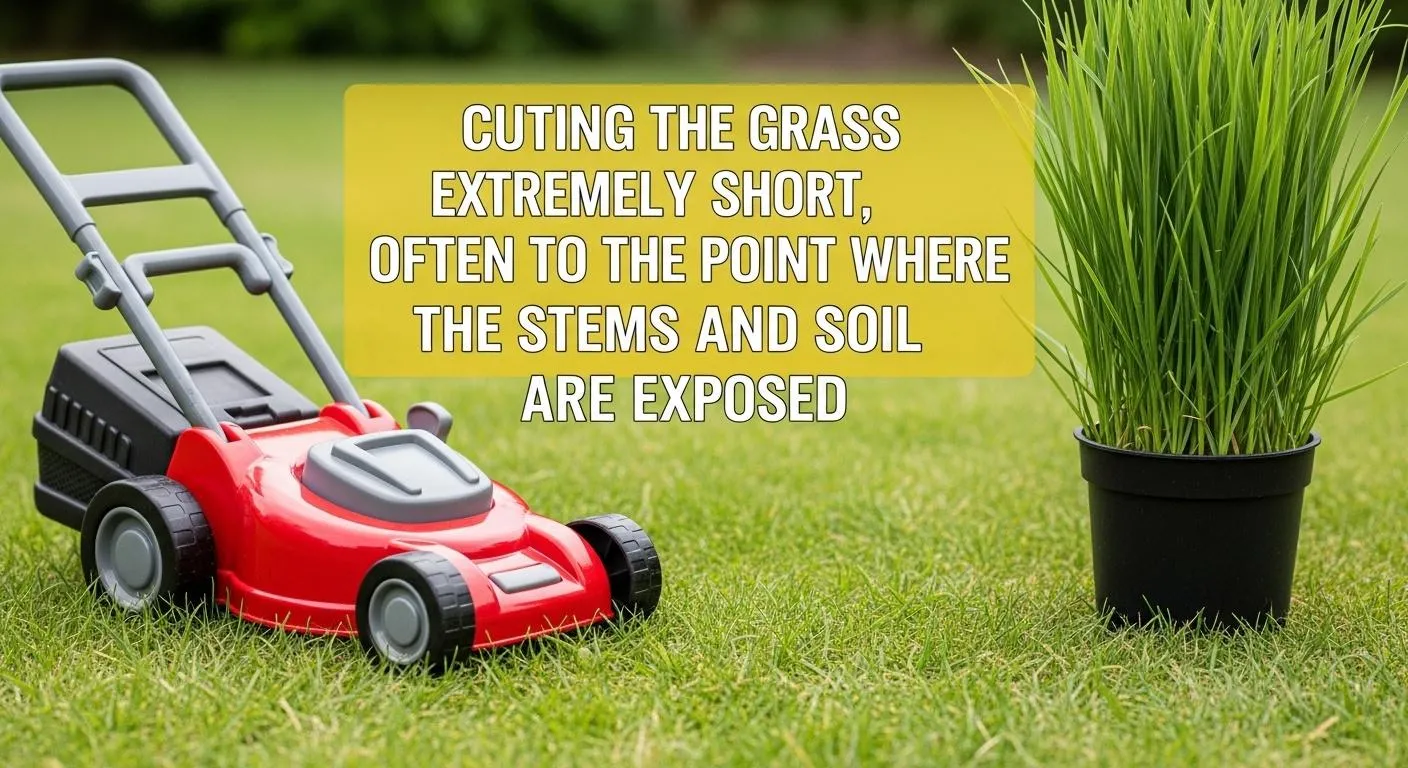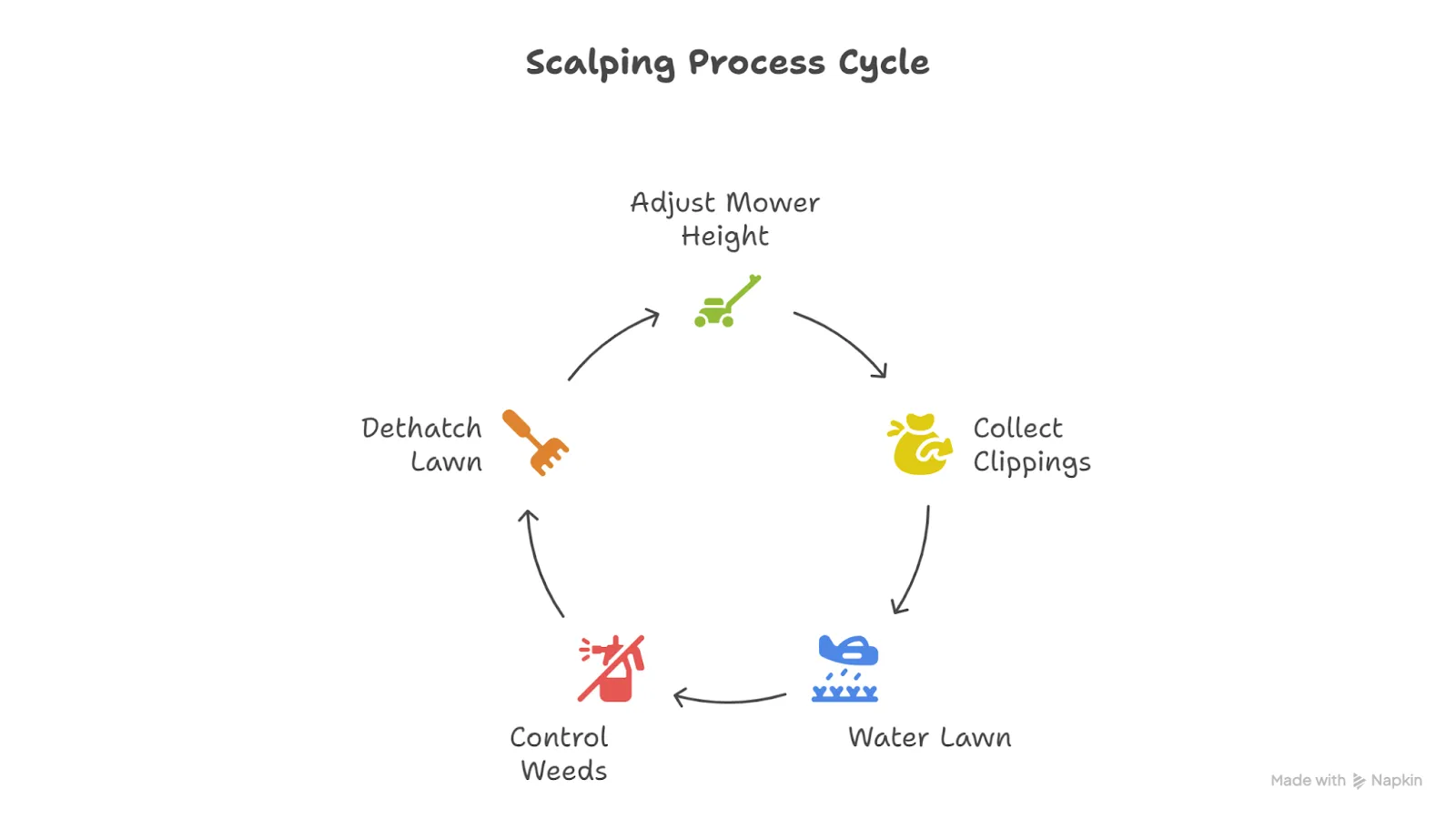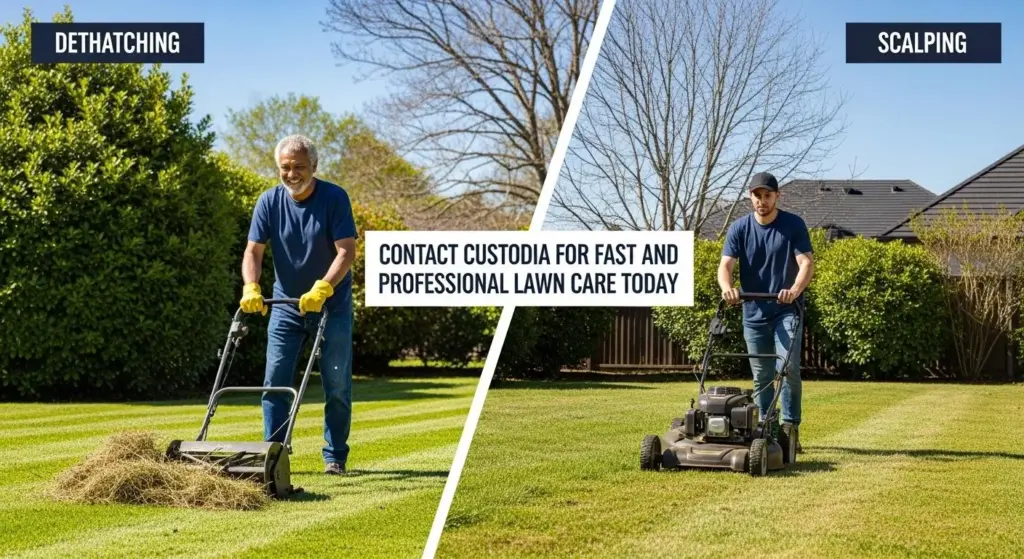Have you ever been told to cut your grass extra short before winter sets in? It sounds like solid advice — clean, tidy, low maintenance. But here’s the thing. That common lawn care tip might be hurting your lawn more than helping it.
Especially here in Canada, where fall brings colder nights, heavy dew, and unexpected frost, mowing your lawn in the fall can do more harm than good.
Grass needs a bit of length to protect itself through the cold months. It’s like a winter coat for your lawn. Without it, roots can freeze, growth can slow, and come spring, your yard may struggle to bounce back.
Instead of guessing what’s right, it might be time to rethink your routine.
A fall lawn inspection or friendly advice from Custodia can help you do it right before winter locks in.
Let’s walk through what works, what doesn’t, and how to get your grass truly ready.
What Is Lawn Scalping?

Lawn scalping means cutting your grass very short, nearly down to the soil. It removes old, dead grass and helps encourage new growth, but only under the right conditions. Many confuse it with dethatching.
However, dethatching targets the thick, spongy layer just below the grass blades.
Scalping is more aggressive and can easily harm cool-season grasses if done at the wrong time, especially in Ontario’s climate.
When Is The Best Time To Scalp Your Lawn In Canada?
Timing matters more than most homeowners realize. In Canada, the safest and most effective time to scalp your lawn is late winter to early spring, between February and April.
This is when new growth hasn’t started, and temperatures begin to rise. By acting early, you avoid stressing your lawn and help set the stage for healthy spring revival and lush green growth.
Why Scalping In Fall Is Usually A Bad Idea
Scalping your lawn in the fall may seem smart, but it’s one of the most common mistakes homeowners make.
As cold weather sets in, your grass needs length to stay insulated. Cutting too short exposes roots to frost and dehydration.
In Ontario, where frost hits early, fall scalping leads to patchy spring recovery and increased lawn maintenance. It’s just not worth the risk.
Why You Shouldn’t Scalp Your Lawn In Fall In Canada
- Provides Insulation Against Frost Damage
Longer grass traps warmth and shields roots from sudden frost during harsh Canadian winters. Scalping removes that natural barrier.
- Helps Retain Moisture – Maintains a Winter Protective “Coat”
Taller blades help hold soil moisture and prevent dry-out during cold, windy fall conditions. Scalping lets precious water escape.
- Reduces Risk of Scalping-Induced Root Stress
Scalping exposes roots and shocks the plant right when it’s trying to rest. Stressed roots struggle through winter recovery.
Here Are 4 Effective Fall Lawn Care Alternatives to Scalping
Instead of going too short, consider gentler strategies that strengthen your lawn before winter.
These alternatives are safer, smarter, and often overlooked.
- Gradual Mower Height Reduction Using the One‑Third Rule
Lower your mower height slowly—never cut more than one-third of the blade length at once. This prevents stress and lets grass adapt before dormancy.
Fall Fertilization and Root Development Strategies
Use a slow-release, high-potassium fertilizer. It fuels strong roots that survive winter and push vibrant growth in spring.
PS: Based on our research and insights from Liu et al.’s (University of Florida) UF/IFAS white paper, slow-release fertilizers help Ontario lawns retain nutrients, reduce runoff, and support healthy spring growth. This makes them a smarter, low-maintenance choice for fall lawn care. Read the source.
Overseeding and Aeration for Cool-Season Grasses
Spread new seed in bare spots and aerate the soil. These help thicken the turf and improve air, water, and nutrient flow below the surface.
Leaf Cleanup and Debris Removal to Prevent Winter Damage
Keep your yard tidy. Leaves trap moisture and block light, causing mold. A clean lawn breathes better and survives winter stronger.
[Read: What’s Included In Yard Cleanup and Lawn Care Near Me In Canada]
So, When Can You Scalp? (Ideal Timing and Conditions)

If you’re set on lawn scalping, aim for late winter or early spring. Here’s when and how:
Earth’s Temperature Triggers (Soil at 60°F / 15°C)
Soil temperature is key. Wait until it reaches about 60°F. Any earlier, and your grass might not recover in time.
Geographic & Climatic Considerations Across Canada — East vs. West
Ontario’s freeze cycles differ from the West Coast’s milder winters. Always adjust your lawn care schedule based on local frost dates and temperature patterns.
Grass-Specific Scalping Tips For Canadian Lawns
- Best Practices for Cool‑Season Grasses (Rye, Fescue, Bluegrass)
Cool-season grasses dominate in Ontario. They thrive in cooler months, which makes timing crucial. Never scalp in the fall.
Instead, scalp gently in early spring to wake a lawn up.
Use sharp blades, and don’t cut below half an inch. Pair this with overseeding and fertilizing for a lush, full lawn by mid-spring.
- Scalping Warm‑Season Grasses
Warm-season grasses like Bermuda or Zoysia aren’t common in most of Canada.
However, if you have a hybrid lawn or warmer microclimate, scalp only when temperatures are stable and warm.
These grasses recover faster but still need to care. Always research your specific grass type before attempting the scalp.
When Not to Scalp
Avoid scalping shaded areas or lawns with clay-heavy or poorly drained soil. These areas are more prone to stress. Also, skip scalping if your grass is recovering from disease, drought, or winter mold.
7 Common Fall Scalping Mistakes To Avoid
- Cutting too short in frost-prone fall periods: Short grass lacks insulation, leaving roots exposed and vulnerable to freezing.
- Confusing scalping with dethatching: Scalping cuts grass; dethatching removes spongy buildup. They serve totally different functions.
- Over-scaling cool-season grasses: These grasses don’t tolerate low cuts in fall. It weakens them ahead of dormancy.
- Ignoring soil health and fertilizer needs: Poor soil equals poor recovery. Always feed your lawn after stress, like mowing or scalping.
- Leaving debris on the lawn before snow: Clumps of dead grass trap moisture, leading to mold and rot during winter.
- Not coordinating seeded lawn timing: Scalping just before or after seeding disrupts germination. Plan it properly, or you’ll waste seed.
- Using the wrong equipment or dull blades: Dull blades tear grass instead of cutting clean. This causes disease, browning, and lawn shock.
So, What Now?
If you’re unsure what your lawn truly needs, why not let a professional take a look?
Custodia Home Management Services offers tailored lawn care across Ontario, helping families protect what matters most — their home and time spent together.






